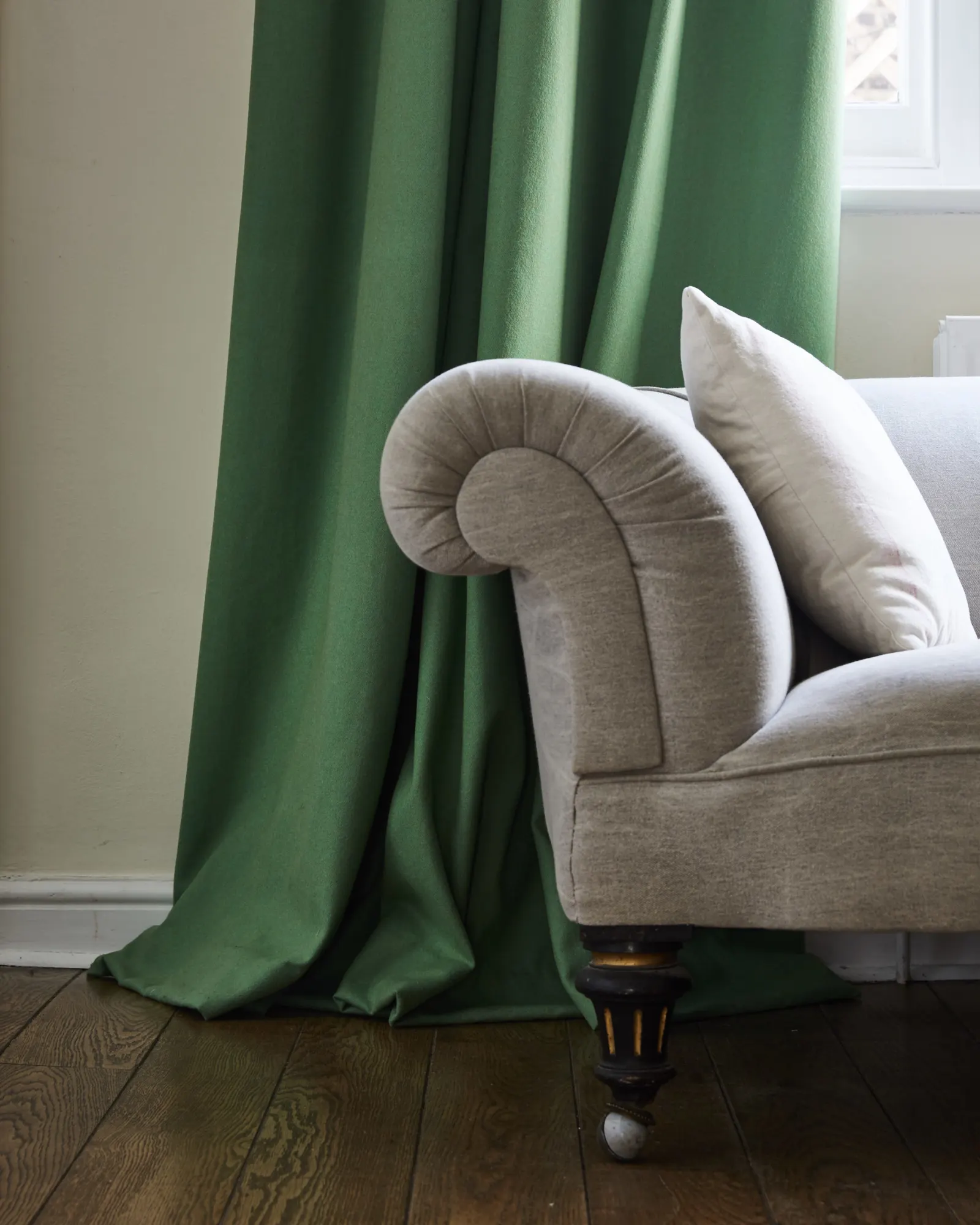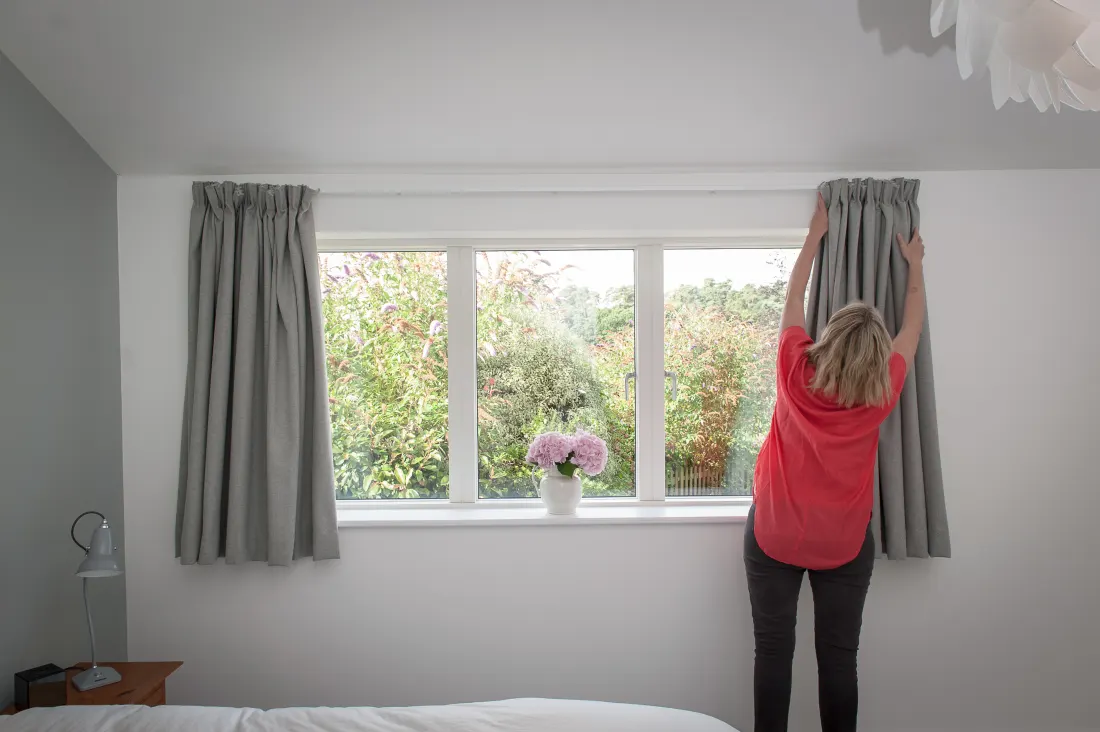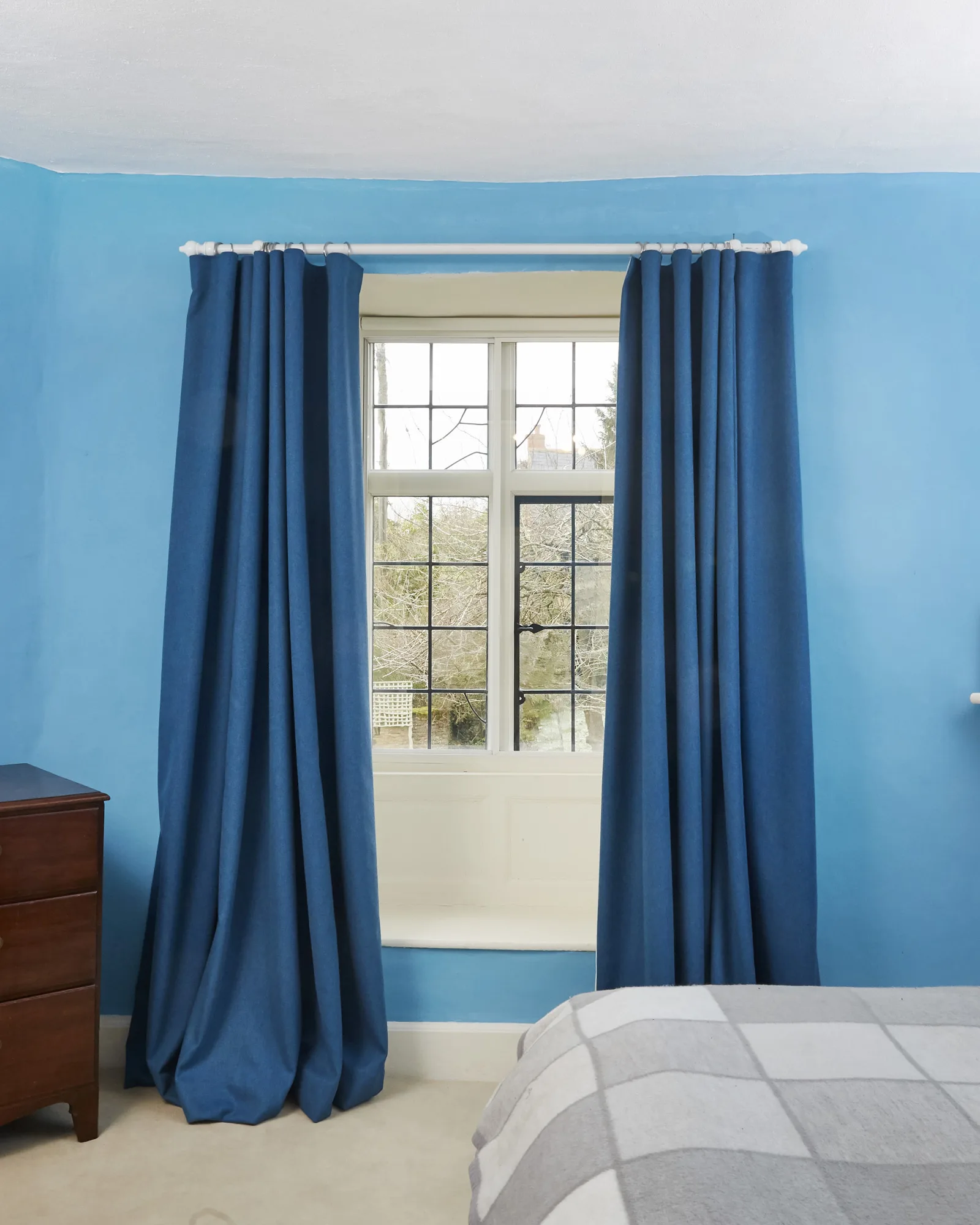Book our home measuring service in London
Our Top 5 Curtain Hacks
If we all lived in large perfectly square houses with no radiators, sockets or strangely positioned pipes, the task of choosing beautiful curtains or blinds would be a cinch. But life would be very dull if we did and it’s often the idiosyncrasies of our home that make it special. So to help you choose the best solution for your windows, here are five common challenges that can crop up when shopping for made to measure window apparel and the best way to overcome them.
Wonky windows
Determining whether your windows are ‘square’ is particularly important if you’re thinking about blinds. And chances are, particularly for those of us living in period properties, that they’re not. The way to determine this is by measuring the diagonals; if they are the same, the window is probably a true square. If they differ by more than 10mm, you should consider fitting the blind outside the window recess or frame to avoid gaps.
Regardless of whether or not a window is ‘square’, it’s good practice when measuring up for made to measure blinds to take three measurements of the height (left, middle, right) and width (top, middle and bottom) of the window. If you’re fitting the blind within a recess or frame, the largest height measurement and the smallest width measurement are the ones to input into our online studio.
Sloping ceilings or floors (or both!)
You may not realise it, but your ceiling or floor might slope in a particular direction. A spirit level will determine whether it does. There’s nothing worse than having a gap between the bottom of the curtains and the floor (and a gap can cause terrible drafts too). Made to measure curtains should sit or pool on the floor. To avoid a gap, measure the finished height in three places and use the largest measurement. Add 5cm-12cm on top of this if you want some pooling (gathered fabric) on the floor.


Radiators under windows
In period properties, radiators are often located under windows so that the cool air coming from the windows falls onto the rising warm air from the radiator and pushes it into the room, creating a comfortable and even temperature throughout. With the advent of double glazing and better insulation, this is no longer necessary and radiators can be placed anywhere. They are still however commonly found under windows for space saving reasons more than any other.
A sure way to increase your heating bills is to have full length curtains that are pulled across the radiator in the evening, blocking precious heat from entering the room. One solution is to team a pair of full length ‘dress’ curtains that don’t pull across with a blind. This is also a good choice if you have sockets, switches or other obstructions under the window that need to be easily accessible. The result will be elegant and maximise the sense of height in a room.
Alternatively, opt for sill length curtains where the bottom of the hem sits on the window sill. If you don’t have a radiator under the window but would like shorter curtains - - - perhaps because your window is above a desk in a study or worktop in a kitchen - - - a good rule of thumb is to specify the height of the curtains so they hang at least 10cm below the sill.

Inward opening windows
Made to measure curtains should be mounted to the wall above an inward opening window or door rather than on the window or door frame. The curtains should therefore be longer than the window or door is tall and wider than the window width, leaving sufficient room to open the window when the curtains are drawn back.
Similarly, blinds mounted above a window frame will allow it to open inward when the blind is drawn up fully. Some blinds stack up to a smaller space than others so always important to check the amount.
If you have the particular challenge of an inward opening window in an alcove or one that sits between cupboards with no wall space either side, swing arms may be the answer. These are rods that attach to the wall beside the window or the window itself and swing open into the room, just like a door. The curtain heading is secured to the rods rather than a pole or track.


No space for stack back
The amount of space either side of a window will affect the choice of treatment. Curtains need space to stack back otherwise they block light from the window. The size of the stack back will be affected by the fabric, the lining and the curtain heading. A thick velvet will need more space than cotton and an interlined curtain, whilst sumptuous and excellent for insulation, will be bulkier.
The curtain heading will affect the volume of fabric used and consequently the amount of space required to stack back effectively. Our advice is to opt for curtains with a wave or eyelet heading where space is limited. If you have space on one side of a window but not the other, opt for a single curtain which can look particularly effective when caught back diagonally across the window. And if there is little or no wall space either side of the window, a blind is your best bet.
There’s always a solution…
If all this talk of ‘problems’ has got you worried, never fear - - - there’s always an answer to any situation and our design team love a challenge. So get in touch with us today to discuss your project or head to our handy measuring guide to get started.